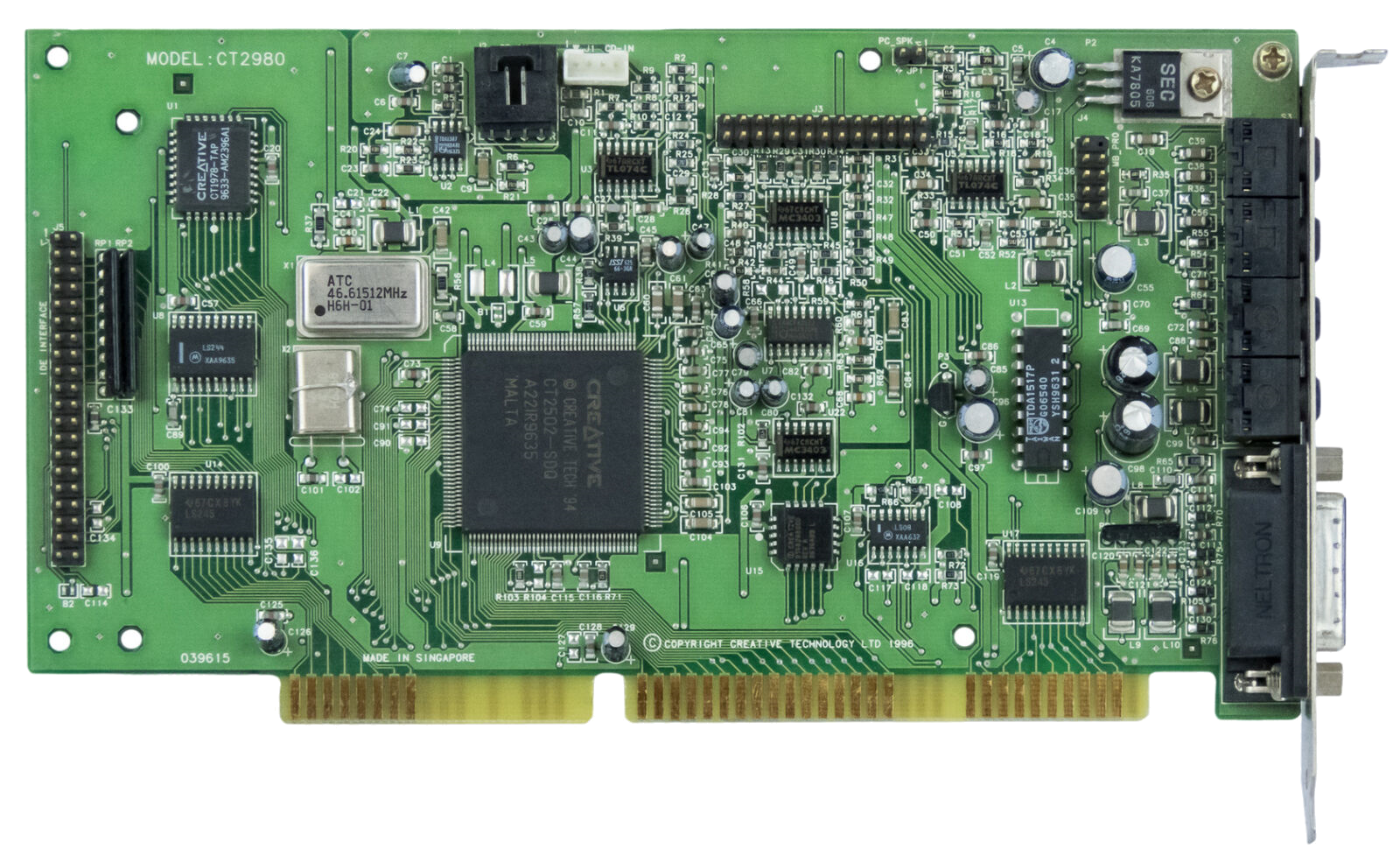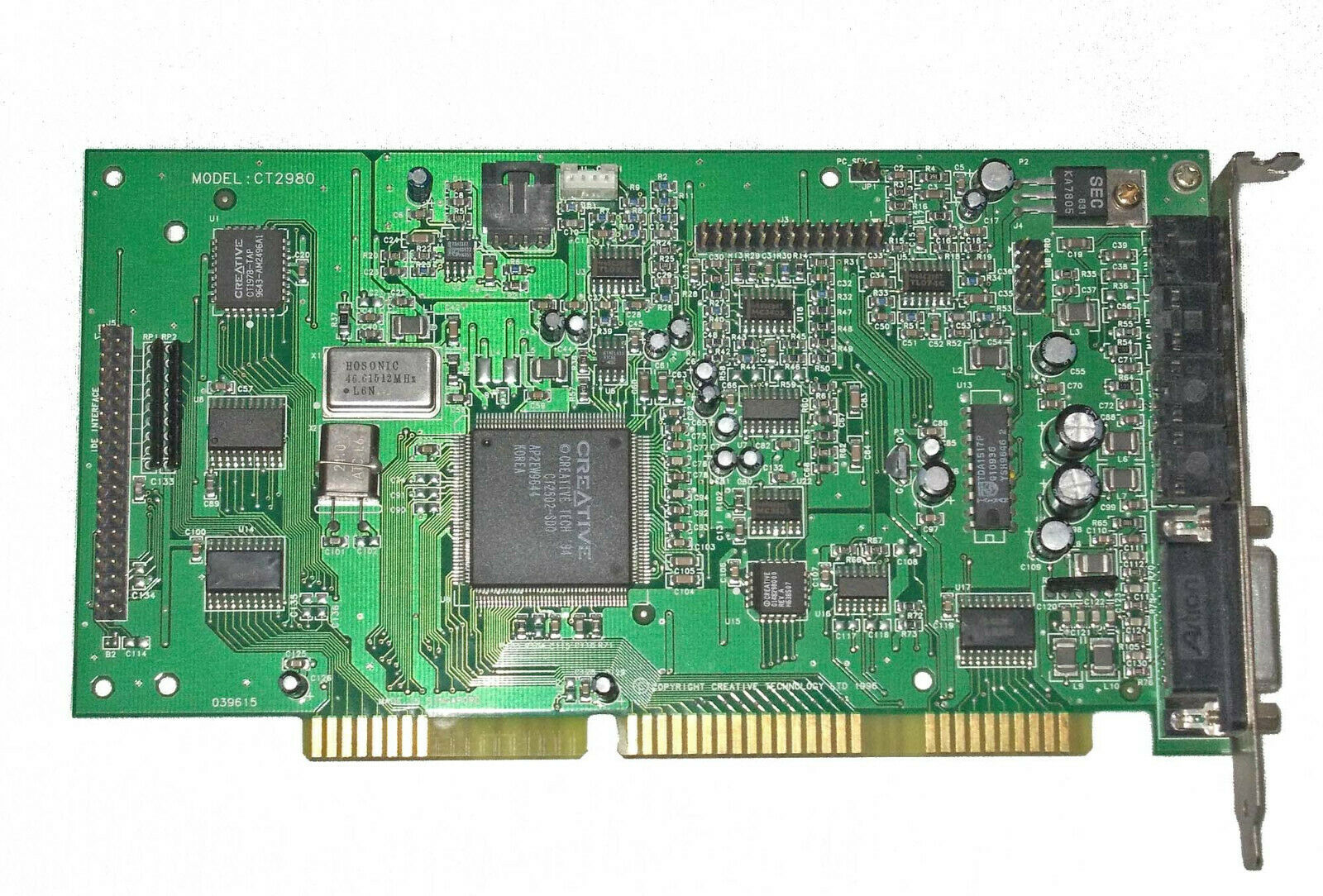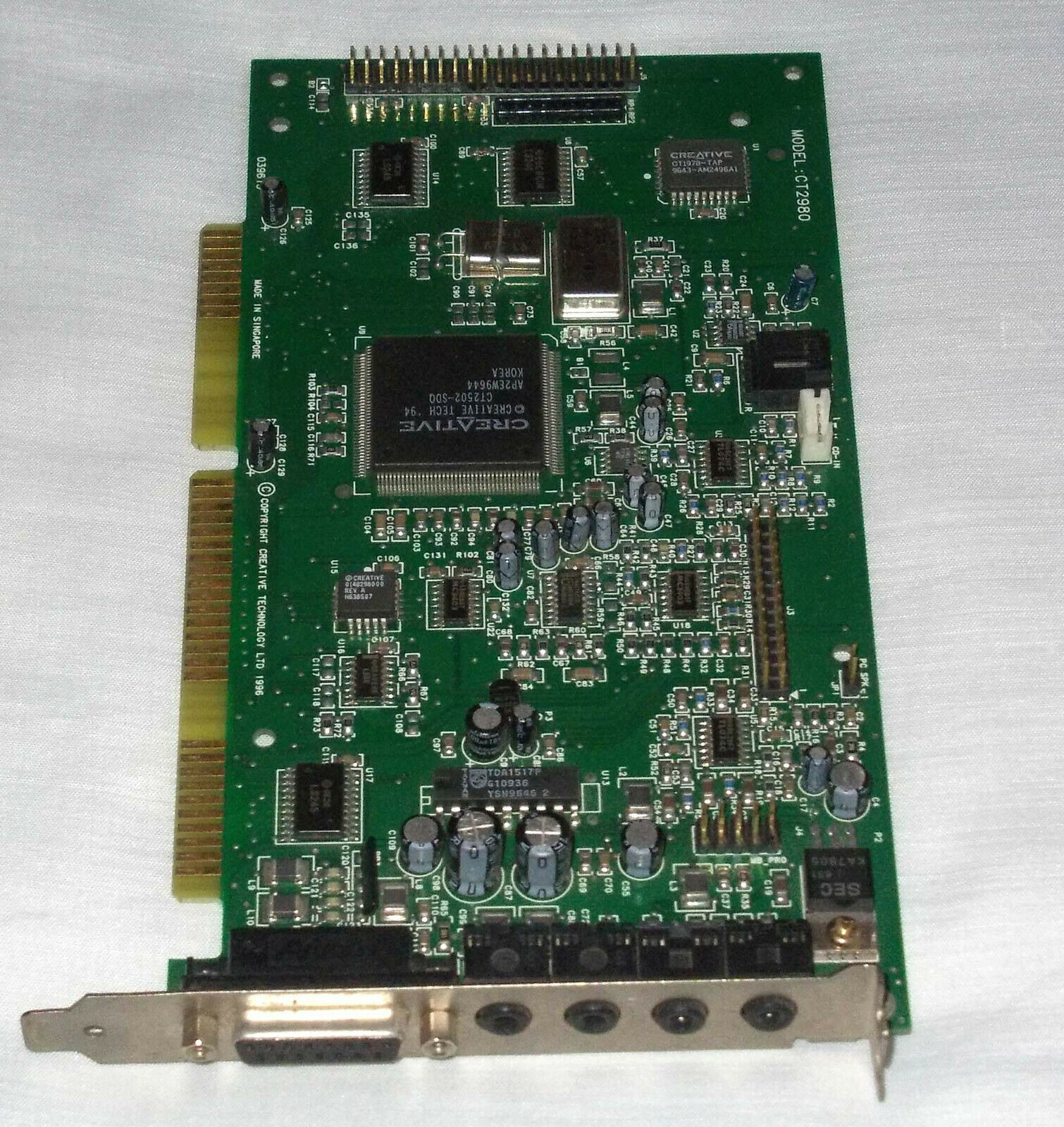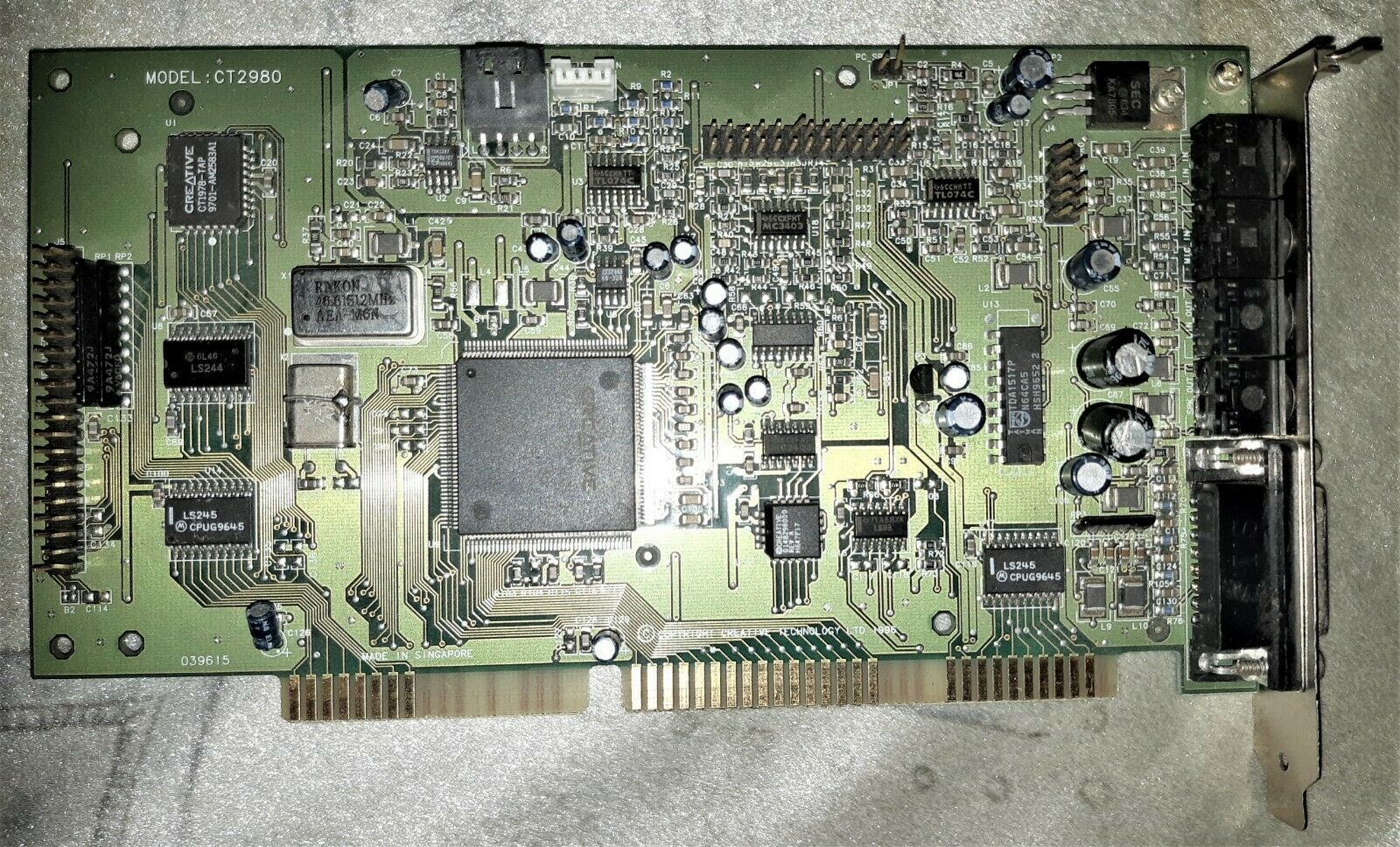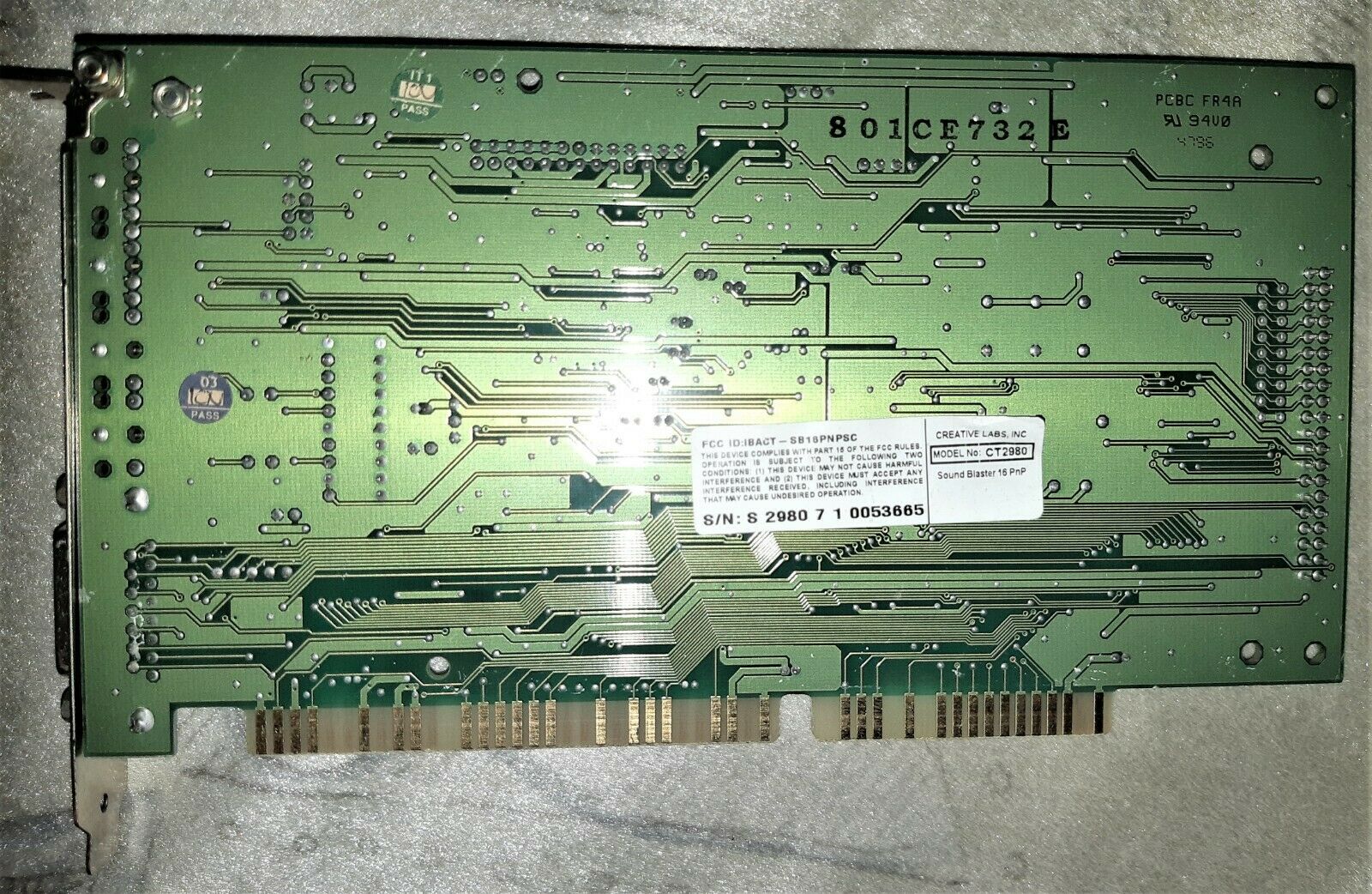Sound Blaster 16 (CT2980)
The CT2980, full name Sound Blaster 16 Value PnP, was the last of the third-generation Sound Blaster 16 cards that wasn't based on a ViBRA chip. It was a "Value" edition card.
|
Released | 1996 |
| Bus | ISA 16-bit | |
| FM Synth | Integrated CQM in CT1978 or Yamaha YMF298 | |
| Audio Codec | None | |
| Standards | Ad Lib, Sound Blaster, Sound Blaster Pro, Sound Blaster 16 | |
| Ports | Speaker-Out, Mic-In, Line-In, Line-Out Game/MIDI port |
|
| CD-ROM | IDE | |
| Wavetable | Wave Blaster header | |
| Plug & Play | Yes | |
| FCC ID(s) | IBACT-SB16PNPBC IBACT-SB16PNPSC |
|
| Price | - | |
| See Also | Sound Blaster 16 (CT2950) |
Most CT2980 cards have the CT1978-TAP CQM FM synthesizer chip (which is almost universally considered poorer quality than a true Yamaha OPL3). though some have the original Yamaha chip. If it has the Yamaha chip instead, this is one of the lowest-noise Sound Blaster 16 cards you will find.
Board Revisions
Known board revisions include 39615.
All revisions CT1741 DSP chip. The DSP version was always v4.13 (with hanging note bug).
Competition
The Sound Blaster 16's primary enhancement over its predecessor (the Sound Blaster Pro) was its capability to playback 16-bit audio for a crisper, cleaner sound. Unfortunately, this wasn't heavily adopted by games developers who continued to use lower-quality samples. Because of this, buying a Sound Blaster 16 really didn't offer any benefit over a much cheaper 8-bit audio card unless you were into recording your own stuff. The marketing department at Creative Labs didn't care, however, and people bought Sound Blaster 16s like they were going out of fashion, thinking 16 bits were always twice as good as 8.
In 1996, sound cards were rapidly moving to highly-integrated single ASIC designs, where the single chip acted as audio codec, DAC, bus interface, MPU-401 interface, and much more. We had already seen this starting to take place since around 1994 with Creative producing the ViBRA series of integrated chips.
Aztech released no less than 11 sound cards in 1996, all part of their third generation based on the ICS WaveFront chip (so they had a combination of FM synth and onboard wavetable audio). 3D surround sound was also upon us, and at least six of these Aztech cards supported some form of 3D audio.
ESS Technologies' and OPTi dominated the off-brand sound card market. ESS had their ESFM(tm)-based ES1868 launched the year before, and new for 1996 was their ES1869 with 3D audio. OPTi had their 82C931 with OPTiFM(tm) and 82C933 with 3D audio.
Turtle Beach launched the MultiSound Pinnacle wavetable card for professional musicians, but for gamers they also came out with the Malibu which was a Sound Blaster 16-compatible card with Kurzweil-supplied onboard wavetable sampled sound.
In the Media
Setting it Up
Downloads
Operation Manual Get in touch if you can provide this missing item! |
DOS and Windows 3.1 Utility Disks The original Sound Blaster 16 DOS and Windows 3.1 installation disks, marked Sound Blaster 16 |
. DOS and Windows 3.1 Utility Disks The original Sound Blaster 16/AWE DOS and Windows 3.1 installation disks, marked SDR-31STD-1-US (Revision 1). |
DOS and Windows 3.1 Utility Disks The original Sound Blaster 16 Value Edition disks, marked Sound Blaster 16 S16V-STD-01-ENG. |
More Pictures
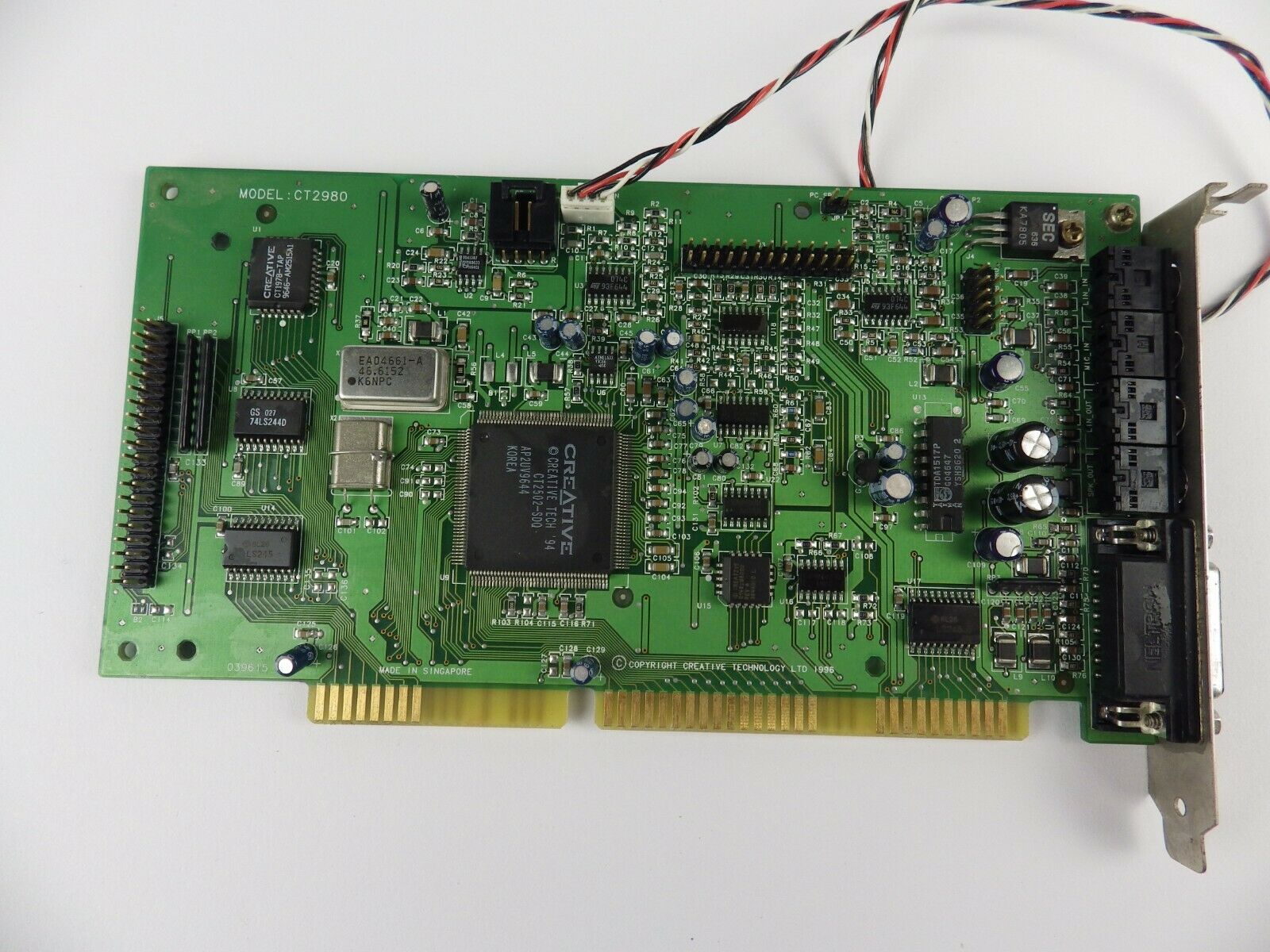

Sound Blaster 16 (CT2980, rev. 39615)
